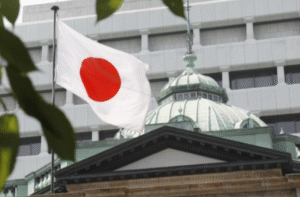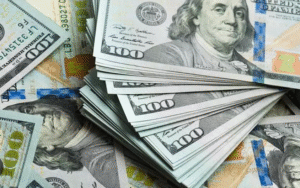$DXY $GLD $BTC
#USD #FederalReserve #DollarStrength #TradeWar #InterestRates #Inflation #Forex #Tariffs #GlobalMarkets #MonetaryPolicy #Geopolitics #EconomicGrowth
Washington’s strategy to defend the U.S. dollar extends beyond the visible battles over trade tariffs. While tariffs often dominate political rhetoric and media coverage, a more subtle and arguably more critical economic fight involves monetary policies and financial market positioning. The strength of the dollar plays a crucial role in the global economy, as it affects trade balances, international investment flows, and even geopolitical leverage. For President Joe Biden, maintaining the dollar’s dominance is not just about economics but also geopolitics, as adversaries like China and Russia seek alternatives to weaken the greenback’s influence. The administration’s key tools in this battle include Federal Reserve policy coordination, strategic currency interventions, and economic diplomacy aimed at reinforcing confidence in U.S. assets.
A major factor influencing the dollar’s strength is interest rate policy set by the Federal Reserve. When U.S. interest rates rise relative to those in Europe or Asia, capital flows into dollar-denominated assets like Treasury bonds, increasing the demand for dollars. This is why recent Fed decisions on rate hikes or pauses are closely scrutinized by market participants. While raising rates helps maintain the dollar’s purchasing power against inflation, it can also weaken economic growth and strain financial markets. On the other hand, if the Fed eases monetary policy too much, the dollar might weaken significantly, reducing its global purchasing power. This balancing act is further complicated by foreign central banks adjusting their own policies in response, resulting in a continuous tug-of-war over which currency holds the most value in global markets.
The Biden administration is also aware of growing threats to the dollar’s dominance from alternative financial systems. Countries like China and Russia have been increasing their use of non-dollar trade settlements, including transactions in the Chinese yuan and even cryptocurrencies like Bitcoin. If major export hubs start settling trades in alternative currencies, demand for U.S. dollars could decline over time, reducing Washington’s economic influence. To counter this, the U.S. is leveraging international financial institutions such as the IMF and World Bank, ensuring that dollar-denominated financial structures remain entrenched in the global economy. Additionally, consistent trade agreements reinforcing the reliance on USD transactions help regulatory frameworks ensure its continued stability.
While trade tariffs often dominate discussions around economic protectionism, the undercurrents of currency stability and global monetary influence have arguably greater long-term implications. A stronger dollar reduces import costs for American consumers but makes U.S. exports less competitive, which could lead to job losses in manufacturing sectors. Meanwhile, emerging markets with significant dollar-denominated debt feel the squeeze when the dollar strengthens, raising the risk of financial crises. The Biden administration’s calculated efforts to defend the dollar reflect the broader challenges of balancing domestic economic stability with global financial leadership. Moving forward, investors and policymakers alike will be watching the Federal Reserve’s next steps, geopolitical developments, and potential shifts in global trade settlement practices to assess the long-term trajectory of the U.S. currency.











Comments are closed.